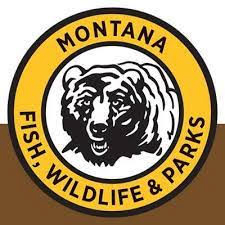
|
Hunters not injured in encounter
A grizzly bear was killed Monday in an encounter with bowhunters in Tepee Creek, north of West Yellowstone.
The two hunters reported being charged by a sow grizzly bear with two yearling cubs. Using handguns, the hunters shot and killed the sow. The yearling bears also charged at the hunters, who shot at and injured one of the yearlings. The hunters were not injured.
Bear specialists, game wardens and a helicopter pilot with Montana Fish, Wildlife & Parks, as well as law enforcement staff with the Custer Gallatin National Forest, visited the site on Wednesday. They confirmed the mortality of the adult bear, an older female. Officials found evidence of a yearling bear being injured, but they did not locate the yearling bears.
No further management action by FWP is planned. This incident is still under investigation by the U.S. Fish & Wildlife Service, who also provided assistance this week.
Be bear aware
Montana is bear country. Grizzly bear populations continue to become denser and more widespread in Montana, increasing the likelihood that residents and recreationists will encounter them in more places each year.
This time of year is when bears are active for longer periods as they consume more food in preparation for hibernation. This period overlaps with hunting season and other fall recreation activities.
Hunters have reported encounters with grizzly bears in other areas since the start of Montana’s archery season on Sept. 7. No hunters have reported injuries, and no other bears have been wounded or killed to date.
Avoiding conflicts with bears is far better than dealing with such conflicts. Here are some precautions to help residents, recreationists and people who work outdoors avoid negative bear encounters:
Some areas with dense concentrations of grizzly bears are very accessible to hunters, especially during the archery season. Keep these precautions in mind when hunting in grizzly country, which includes much of the western two-thirds of Montana:
Grizzly bears in the lower 48 states are listed as threatened under the Endangered Species Act. Management authority for grizzlies rests with the U.S. Fish & Wildlife Service, working closely in Montana with FWP, the Forest Service, the National Park Service, the Bureau of Land Management, the U.S. Geological Survey, Wildlife Services, and Native American tribes. This collaboration happens through the Interagency Grizzly Bear Committee.
September is Bear Aware month in Montana. For information and education events on bear safety, click here.